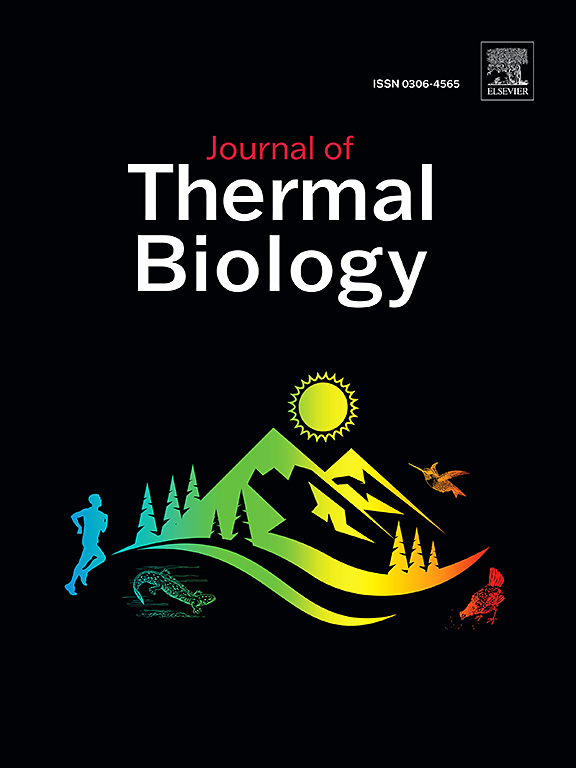用于热成像和使用热等离子体分析神经系统疾病的混合AI模型
IF 2.9
2区 生物学
Q2 BIOLOGY
引用次数: 0
摘要
本文介绍了一种基于人工智能的多层组织结构热分布预测和分析方法——等离子体纳米粒子增强多光谱热成像(MSTI)。优化问题将生物物理模拟与创新的机器学习技术相结合,以改进生物组织的热映射和分析。所描述的技术使用尺寸为25-35纳米的金(Au)和银(Ag)纳米颗粒,具有热等离子体特性,能够通过多光谱成像获得高分辨率的热图像。提出了一种新的秩熵机器学习(RE-ML)方法,该方法结合了概率隐链特征和等离子体纳米粒子相互作用产生的热模式的熵分析。RE-ML框架然后在概率隐链模型的特征排序决定优先使用的特征之前,重新生成经过全局和局部熵表征评估的热分布。该系统在特定组织水平上的模式识别准确率达到97.8%,在神经组织方面表现突出;精密度高达98.6%;灵敏度为98.5%;在不同组织区域的热分布的可视化和分析特异性为99.0%。尽管错误率为0.14,但该系统在预测热量分布方面具有很高的准确性。因此,所提出的方法在热模式识别方面具有无与伦比的精度,并为增强生物组织的热图提供了可能性。本文章由计算机程序翻译,如有差异,请以英文原文为准。
Hybrid AI models for thermal imaging and analysis of neurological disorders using thermoplasmonics
This paper describes a novel Artificial Intelligence-based approach to predict and analyse heat distribution in multi-tiered tissue structures by using plasmonic nanoparticle enhanced Multi-Spectral Thermal Imaging (MSTI). The optimization problem combines biophysical simulation with innovative machine learning techniques to improve the thermal mapping and analysis of biological tissues.
The described technique uses gold (Au) and silver (Ag) nanoparticles of sizes 25–35 nm, being characteristic of their thermoplasmonic properties and capable of obtaining high-resolution thermal images through multi-spectral imaging. A new Rank Entropy Machine Learning (RE-ML), incorporating probabilistic hidden chain features and entropy analysis of the thermal patterns resulting from plasmonic nanoparticle interaction, is presented.
The RE-ML framework then regenerates thermal distributions which undergo global and local entropy characterizations assessment before a probabilistic Hidden chain model's feature ranking determines the features to be preferentially used. The system obtains 97.8 % accuracy in specific tissue-level pattern recognition, excelling in neurological tissues; high precision of 98.6 %; sensitivity of 98.5 %; and specificity of 99.0 % in visualizing and analyzing thermal distributions over different tissue regions.
Despite its 0.14 error rate, the system is highly accurate in forecasting heat distribution. Thus, the proposed approach exhibits unmatched precision in thermal pattern recognition and presents possibilities for enhancing the heat maps of biological tissues.
求助全文
通过发布文献求助,成功后即可免费获取论文全文。
去求助
来源期刊

Journal of thermal biology
生物-动物学
CiteScore
5.30
自引率
7.40%
发文量
196
审稿时长
14.5 weeks
期刊介绍:
The Journal of Thermal Biology publishes articles that advance our knowledge on the ways and mechanisms through which temperature affects man and animals. This includes studies of their responses to these effects and on the ecological consequences. Directly relevant to this theme are:
• The mechanisms of thermal limitation, heat and cold injury, and the resistance of organisms to extremes of temperature
• The mechanisms involved in acclimation, acclimatization and evolutionary adaptation to temperature
• Mechanisms underlying the patterns of hibernation, torpor, dormancy, aestivation and diapause
• Effects of temperature on reproduction and development, growth, ageing and life-span
• Studies on modelling heat transfer between organisms and their environment
• The contributions of temperature to effects of climate change on animal species and man
• Studies of conservation biology and physiology related to temperature
• Behavioural and physiological regulation of body temperature including its pathophysiology and fever
• Medical applications of hypo- and hyperthermia
Article types:
• Original articles
• Review articles
 求助内容:
求助内容: 应助结果提醒方式:
应助结果提醒方式:


